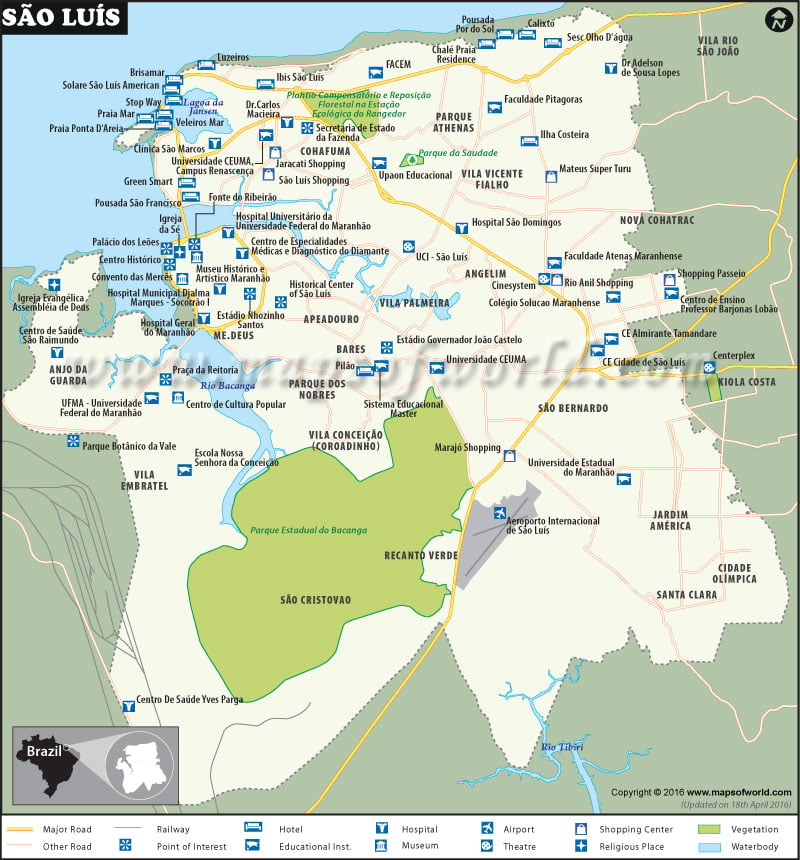São Luís, Brazil
Founded in the early 17th century by the French, lorded over by the Dutch and the Portuguese, São Luís is the capital and largest city of the Maranhão state in northeastern Brazil. Renowned for folkloric traditions, cobblestone streets, colonial mansions, and steamy neighborhoods, it is a treasure chest waiting to be opened.
The city is located on the Island of Saint-Louis in the Saint Mark’s Bay near the Atlantic Ocean. The island is known as “Athens of Brazil” as many poets and writers such as Gonçalves Dias, Aluísio Azevedo, and Ferreira Gullar as well as the Brazilian samba singer Alcione lived here.
How to Reach São Luís
The city is about 1950 miles north of Rio de Janeiro and 1240 miles from the national capital, Brasilia.
By Air – Marechal Cunha Machado International Airport (SLZ), about eight miles south of downtown, serves the metropolitan area.
By Road – The federal highway BR-135 starts from the city and runs south to Belo Horizonte in Minas Gerais state.
By Rail – The train station on Companhia Vale do Rio Doce street is served thrice a week by trains coming from Parauapebas.
By Sea – The city has two major sea ports: Madeira Port and Itaqui Port.
Places to Visit in São Luís
Featuring Portuguese architecture and unique museums, the Historic Centre of São Luís is a World Heritage Site since 1997. The Cafua das Mercês chronicles the slave trade and Afro-Brazilian culture; the Centro de Cultura Popular Domingos Vieira Filho displays fascinating exhibits related to São Luís’ festivals; the Museu do Negro showcases a collection of wood carvings and relics of slavery; the Museu Histórico e Artístico offers a glimpse of life in the days of yore, and the Museu de Artes Visuais houses colorful azulejos (tiles), sculptures, and paintings.
The 18th-century Palácio dos Leões (built on the site of an original French fort), the 17th-century cathedral Igreja da Sé (has frescoes decorated with babaçu motifs), and the Palácio de la Ravardière (City Hall) are major tourist attractions in São Luís.

